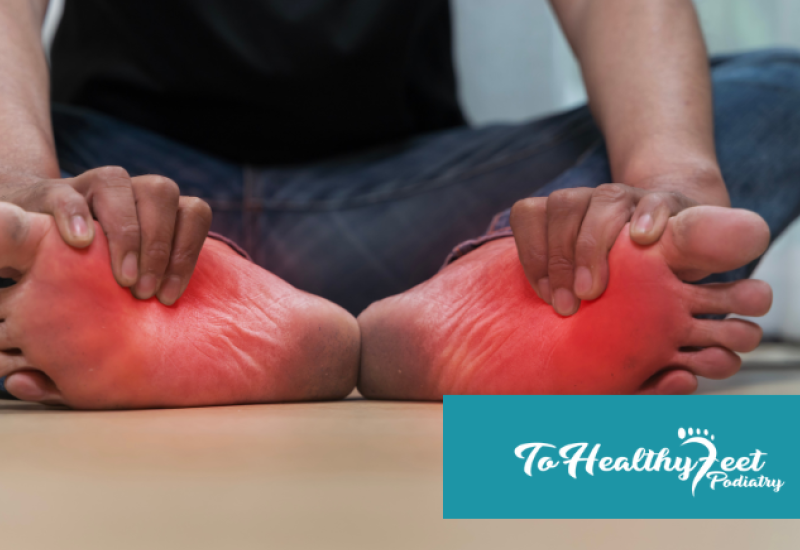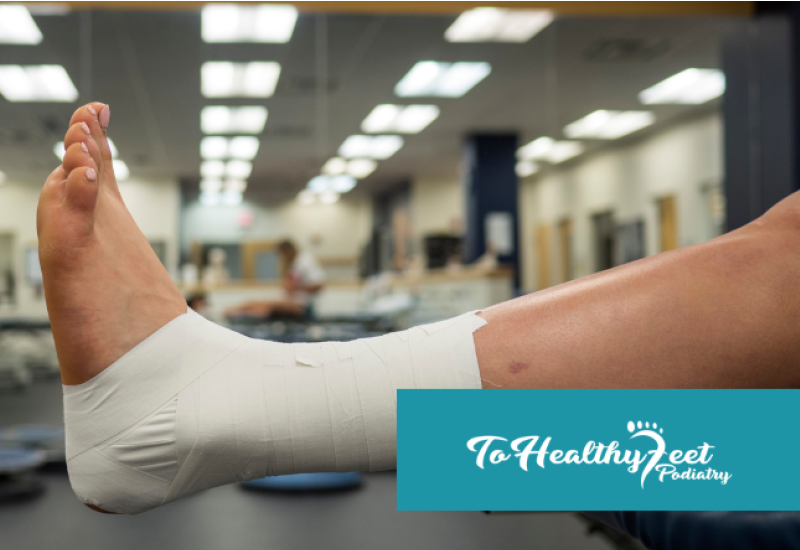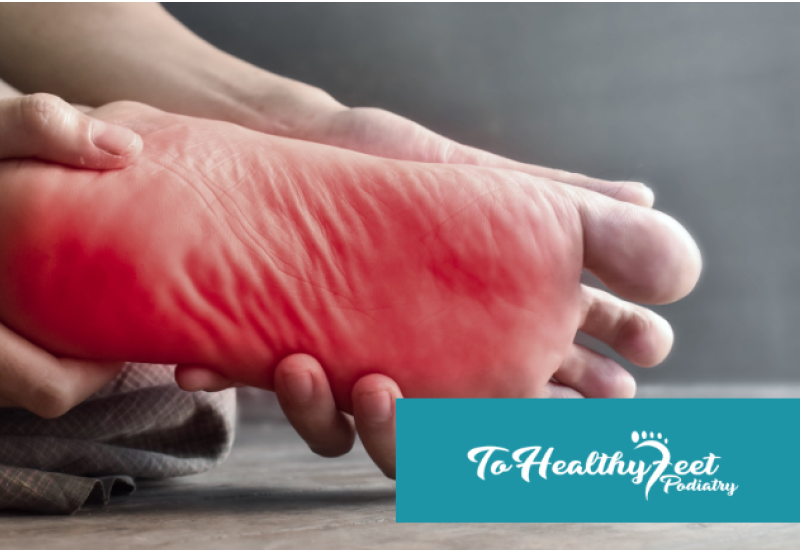Achilles Tendonitis Symptoms
Based on the significance of the injury, Achilles tendonitis can exhibit a range of symptoms:
- Mild Achilles tendonitis is characterized by periodical pain on the back of the heel一most common in the morning or after physical activity.
- Moderate Achilles tendonitis is accompanied by regular pain and possibly some swelling. A nodule may appear on the back of the heel as well.
- Severe Achille tendonitis is distinguished by constant throbbing pain. Any activity that puts weight on the Achilles may lead to a tear or rupture.
Diagnosing Achilles Tendonitis
Your podiatrist has multiple tools at their disposal to pinpoint the exact location of the inflammation and to determine its severity.
Diagnosis usually begins with a simple physical examination, in which your foot doctor will press on the affected area to approximate the location of the pain and swelling. They will also evaluate the flexibility, range of motion, and reflexes of your foot and ankle.
Your podiatrist may also use one or more of these tools to confirm your condition:
- X-rays: X-rays cannot actually visualize tendon damage; they serve to rule out other conditions that cause similar symptoms.
- Ultrasound: Sound waves can produce real-time images of the Achilles tendon in motion. It can even visualize blood flow around the tendon.
- Magnetic resonance imaging (MRI): When ultrasound imaging cannot provide a clear diagnosis, your podiatrist may turn to MRI for an even more detailed look of your injury.
Treating Achilles tendonitis
Treatments for this foot condition depend on its medical severity.
Mild cases respond well to the RICE method:
- Rest frequently to speed up your natural healing process.
- Apply ice in the affected area to reduce inflammation.
- Wear an ankle sleeve or a compression sock to increase blood circulation in the area.
- Keeping the affected foot elevated can decrease inflammation. Use an orthotic device like a shoe insert to elevate your heel while going about your daily activities.
Consistent use of the RICE method should cure your Achilles tendonitis in 12 to 16 weeks. Your foot doctor may recommend over-the-counter pain medications to ease the recovery process.
Surgery to repair the Achilles tendon is a last resort reserved for cases that do not respond to more conservative treatments for several months. Depending on the state of the damaged tendon, the procedure either involves removing the diseased portion of the tendon or stitching the tendon back together. If the tendon is beyond repair, part or all of it may have to be replaced with another tendon taken elsewhere from the foot.
As with all surgeries, repairing the Achilles tendon comes with risks. This further underscores the importance of treating your Achilles tendonitis before it gets worse.
Managing Your Achilles Tendonitis
You may be tempted to discount the first sign of Achilles tendonitis. After all, it usually starts out as minor discomfort that goes away during the day. However, your condition can easily deteriorate, affecting every aspect of your life.
See a podiatrist before your condition puts your Achilles tendon at risk of a tear of rupture. Our NYC foot doctors can accurately diagnose the extent of the damage and come up with the right treatment to get you on the path of recovery. Call To Healthy Feet Podiatry at 917-398-3668 or fill out the online contact form to book a consultation for your Achilles tendonitis at our Midtown Manhattan office.
FAQs
Q: Can I recover from Achilles tendonitis by myself?
A: Yes. There are many Achilles Tendonitis treatments that you can try at home. These include resting, keeping the affected foot elevated and compressed, applying ice, and stretching.
Q:How long does it take to recover from Achilles tendonitis?
A: With proper care, you can expect to recover from Achilles tendonitis in 12 to 16 weeks.
Q: Should I see a foot doctor or a podiatrist?
A: You should seek professional treatment if the pain or swelling in the affected area is not responding to physical therapy at home. Our podiatrists in Midtown Manhattan are available to see you promptly and get you back on your feet with skilled assessments and knowledgeable treatments.




